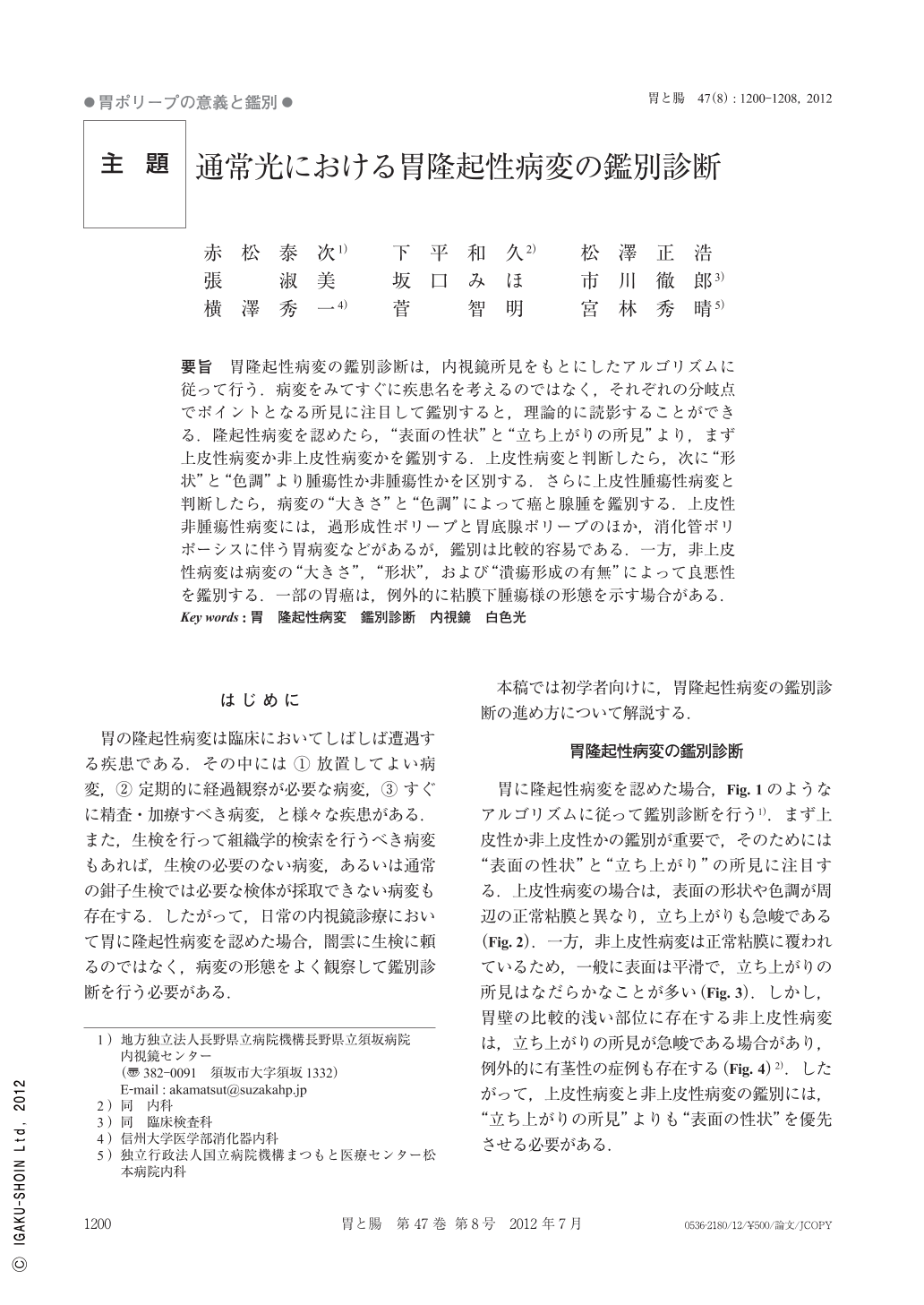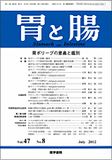Japanese
English
- 有料閲覧
- Abstract 文献概要
- 1ページ目 Look Inside
- 参考文献 Reference
- サイト内被引用 Cited by
要旨 胃隆起性病変の鑑別診断は,内視鏡所見をもとにしたアルゴリズムに従って行う.病変をみてすぐに疾患名を考えるのではなく,それぞれの分岐点でポイントとなる所見に注目して鑑別すると,理論的に読影することができる.隆起性病変を認めたら,“表面の性状”と“立ち上がりの所見”より,まず上皮性病変か非上皮性病変かを鑑別する.上皮性病変と判断したら,次に“形状”と“色調”より腫瘍性か非腫瘍性かを区別する.さらに上皮性腫瘍性病変と判断したら,病変の“大きさ”と“色調”によって癌と腺腫を鑑別する.上皮性非腫瘍性病変には,過形成性ポリープと胃底腺ポリープのほか,消化管ポリポーシスに伴う胃病変などがあるが,鑑別は比較的容易である.一方,非上皮性病変は病変の“大きさ”,“形状”,および“潰瘍形成の有無”によって良悪性を鑑別する.一部の胃癌は,例外的に粘膜下腫瘍様の形態を示す場合がある.
We can perform theoretical differential diagnosis for gastric protruded lesions according to a diagnostic algorithm based on important endoscopic findings. When we encounter gastric protruded lesions, we should distinguish between epithelial lesions and non epithelial ones first by the endoscopic findings of “surface pattern”and “situation of standing up”. If we judge the lesions as epithelial lesions, we should distinguish between tumorous lesions and non tumorous ones by the endoscopic findings of “shape”and “color”. Furthermore, if we judge the lesions as epithelial tumorous lesions, we should distinguish between cancer and adenoma by the endoscopic findings of “size”and “color”. Hyperplastic polyps, fundic polyps, and gastrointestinal polyposis-related gastric lesions are affiliated with epithelial non tumorous lesions, however it is relatively easy to distinguish them. On the other hand, if we judge the lesions as non epithelial lesions, we should distinguish between benign lesions and malignant ones from the endoscopic findings of “size”, “shape”, and “existence of ulceration on the top of the lesions”. However, we should have a knowledge of types of gastric cancer that look like non epithelial lesions.

Copyright © 2012, Igaku-Shoin Ltd. All rights reserved.


